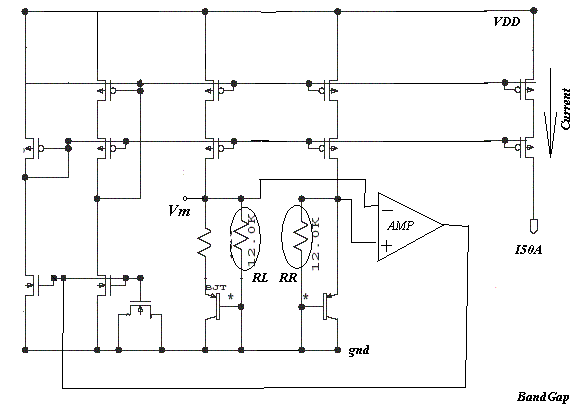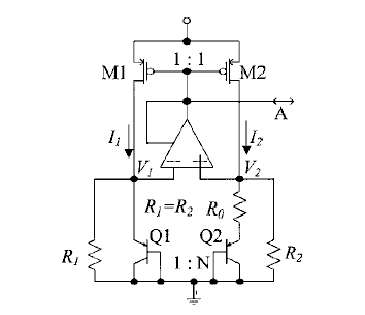Davidy
Junior Member level 2

Who can help me the analysis this bandgap circuit?

1.How about the current "I50A" in this bandgap circuit?
Is it PTAT current or temperature-independent?
I think it is PTAT but I was told that it work as a bandgap current source in a ADC circuit.
2.How about the voltage "Vm" in the middle of the circiut?
Is it PTAT current or temperature-independent?
3. What is the usage of the two resistors "RR" and "RL" in the base terminl of the bipolor FET?
Thx!
1.How about the current "I50A" in this bandgap circuit?
Is it PTAT current or temperature-independent?
I think it is PTAT but I was told that it work as a bandgap current source in a ADC circuit.
2.How about the voltage "Vm" in the middle of the circiut?
Is it PTAT current or temperature-independent?
3. What is the usage of the two resistors "RR" and "RL" in the base terminl of the bipolor FET?
Thx!




